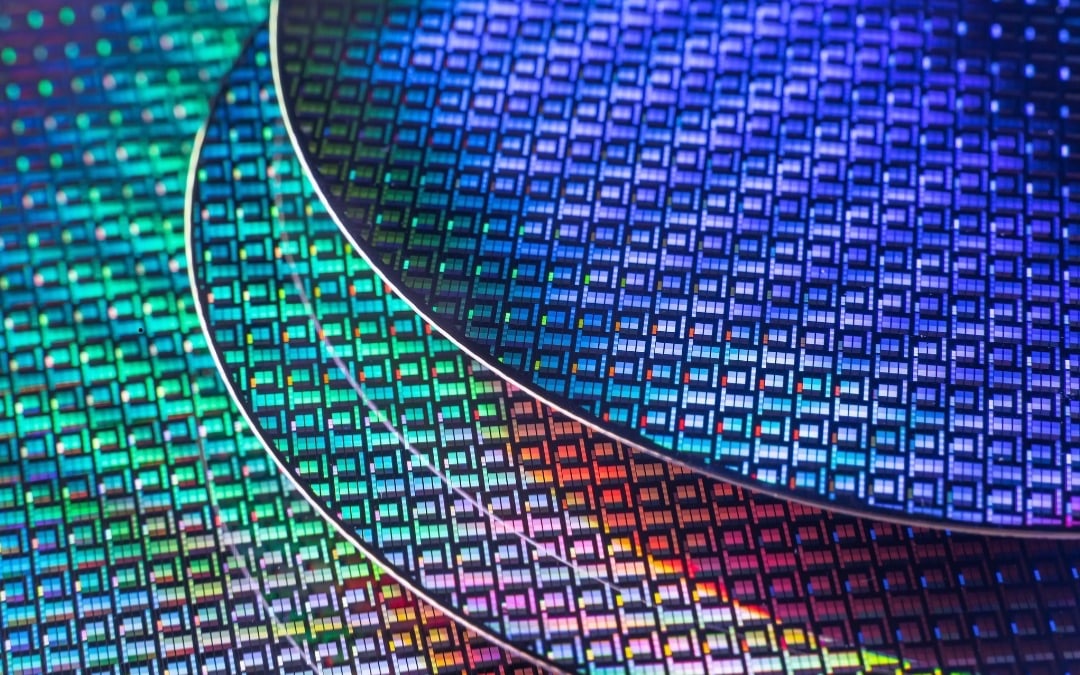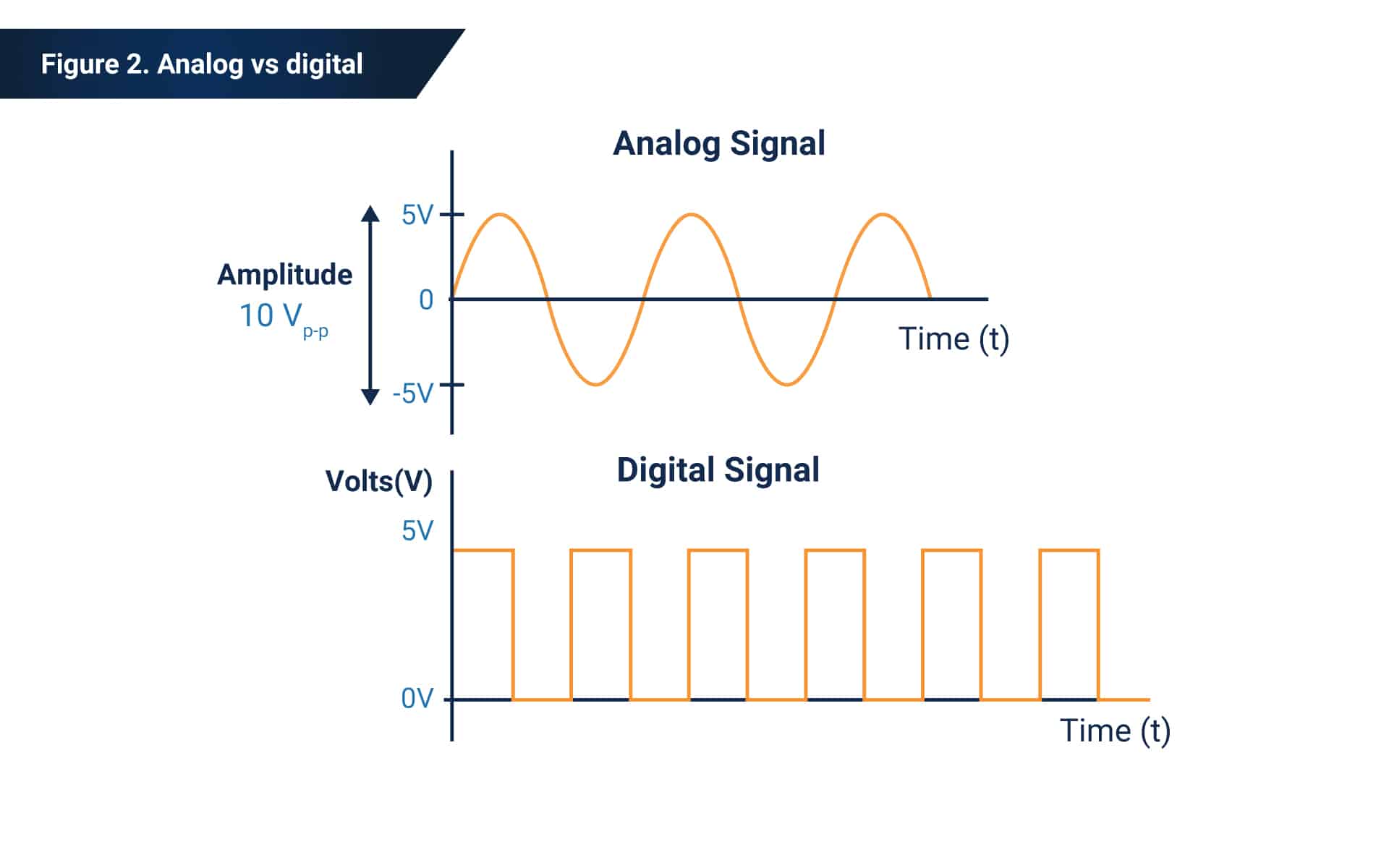This article is the first in a series that will take an in-depth look into one of Phison’s most critical offerings: the integrated circuit. Here we define what an integrated circuit is and how they’re classified.
The integrated circuit (IC) is the most basic foundation of today’s electronics. Also referred to as chips or microchips, ICs are made up of a collection of electronic components attached to a single piece of semiconductor material—typically silicon.
While that description might seem straightforward at first, it turns out to be a bit more complicated than that.
Complex components with multiple functions
IC chips are built with a large number of nanometer-sized circuits that connect to mini-switches called transistors. These transistors are semiconductor devices that basically become conductive when connected to electrical voltage or current.
To put this concept into perspective, imagine a plumbing system with many pipes and valves. The pipes deliver water just like the mini-circuits deliver electric current in ICs. The transistors are critical points of control that can be turned on or off to direct the current where it needs to go, like the way valves in a plumbing system direct the flow of water.
By directing electric current through the maze of circuits, transistors and a variety of other components, an IC can complete a wide variety of computation and logic processing tasks. ICs have many potential functions—they can act as computer memory, counters, timers and so on. They can amplify signals, perform calculations and even evaluate decision points and branch the code based on the results. These foundational elements are all critical for assembling a complex device like the CPU in a desktop computer.
IC classification
With their unique architectures and the range of possible uses, the IC family tree can be divided into three major groups: digital/logic, analog (like audio signals or collision avoidance radar in a car) and memory (see Figure 1)
.
Figure 1. All ICs fall within one of the three main categories, which have distinct uses.
Analog vs. digital: A little background
Before delving into each IC group, It’s important to understand the difference between digital and analog. While they both refer to a type of signal, the difference lies in how the data gets transmitted. Analog signals are a continuous wave. Digital signals are made up of ones and zeros and are not continuous—each one or zero is a discrete “packet” of information. You can see the difference between the two waveforms (or the shapes of their signals when graphed visually) in Figure 2.
Analog waves are really good at representing things associated with the real world. Think sound waves, or the pressure of a foot impacting the ground, the tremors of an earthquake that gradually build and so on. There is always a smooth progression from point A to point B.
Digital signals, on the other hand, are more commonly found in technological systems because they are much easier to control, count, measure and manage due to their clearly defined, instantaneous start and stop points.
Digital ICs
In the early 2000s, Phison was founded in Taiwan by a group of young engineers as they designed the world’s first single-chip USB flash drive controller IC. This chip would be classified as a type of digital IC.
With discrete signals, voltage (or electrical level) rises and falls instantaneously, unlike the voltage in analog signals that can rise and fall smoothly like a wave. And with specific, predetermined voltage levels for the highs and lows in a discrete signal, the data in binary digits (ones and zeros) can be easily deduced. The “clear-cut” nature of digital signals and chips are more designer-friendly, especially with the advancement of today’s circuit design tools.
Figure 2. Analog signals are continuous, while digital signals are considered discrete.
Analog ICs
As mentioned above, the continuous wavelike signals of analog ICs are really good at representing variable factors in the real world such as as electromagnetic waves and heat radiation. They’re often deployed as signal processing and interfacing units such as filters, which remove, reduce or change the characteristics of a signal; or temperature sensors, which produce a voltage proportional to a preset temperature.
To illustrate, let’s go back to our plumbing pipes and valves. By randomly adjusting a water valve and observing the variation of total water flow versus time, a continuous waveform can be plotted with the amount of current flow as a function of time. It works the same way with a properly designed analog circuit: you can plot a waveform with electrical current or voltage measurements instead of water.
The downside to analog signals is that they’re intricate and difficult to analyze. It takes a series of complex mathematical operations to translate the waveforms into simpler forms so they actually become conclusive with straightforward observations.
The variability in analog signals, a positive in some uses, can make analog ICs really sensitive because they have a low error tolerance. That means they’re not very good at operating in the presence of any little error in the circuitry, hardware configuration or user design, and can get glitchy and even end up compromising the integrity of the overall system.
With that said, the significance of analog ICs in complex system designs cannot be overlooked—historically most electronic devices started with analog information processing. Today, analog ICs are still commonplace and are often combined with digital ICs in the design of complex systems and modules.
Memory ICs
The purpose of a memory IC is to store data. In the past decade, NAND flash memory in particular has been popular as a long-term storage medium because it can retain information when power is turned off and it has no moving parts. This type of data retention is also called non-volatile. In contrast, volatile memory such as RAM, is fast but loses its data when power is turned off. Today’s engineers can use either volatile or non-volatile memory, based on the projected frequency of data access from the targeted application.
One thing that all memory ICs do have in common today is that they require a digital controller IC in order to provide a useful solution. Having memory ICs on a circuit board without a controller IC to drive them is like having a car with the best wheels but no engine.
This leads back to the digital IC we previously discussed. That first USB flash controller was a digital IC developed by Phison for a specific function: data storage. These types of IC are commonly called Application Specific ICs (ASIC), which is different from general-purpose ICs that are used for general computing in CPUs and GPUs. While ASIC applications can range from a simple in-vehicle infotainment system to a national telecom network control system, Phison’s ASICs are designed to control storage devices mounted with NAND flash memory ICs.
Different memory ICs can require unique styles of “driving” to accommodate application needs. These unique requirements are achieved through IC customization. The extent of customization determines the flexibility for functions and features.
Phison designs ICs for a wide range of needs
Phison specializes in end-to-end customization in IC design. Its NAND flash memory controller ICs are full-custom solutions with functional modules tailored to best control memory ICs. Phison has delivered leading solutions for over 20 years, while continuously investing in technology R&D to remain at the forefront of IC design.
Stay tuned for our next installment of the IC 101 blog series, where we’ll take a closer look at the IC design process.










